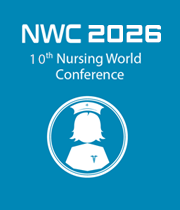Title : Phenobarbital monotherapy for treatment of severe alcohol withdrawal syndrome
Abstract:
Background: Severe alcohol withdrawal syndrome (SAWS) results from inadequate inhibitory GABA activity combined with excessive excitatory glutamate activity. While Benzodiazepines (BZD) address the GABA deficiency, phenobarbital (Pb) simultaneously enhances GABA activity, inhibits glutamate (AMPA type receptor) activity, and hence, creates a balanced neurotransmitter milieu in the CNS. Previously, prolonged dexmedetomidine drip was routinely used to offset the undesired paradoxical agitation and delirium seen with BZDs. Pb has predictable pharmacokinetics, plasma levels that correlate with CNS effects, and a prolonged half-life creating a tapering effect and avoiding the fluctuations seen with BZD.
We introduced an evidence-based Pb protocol for treatment of SAWS anticipating decreased length of stay (LOS), duration of dexmedetomidine use, restraints, and aspiration pneumonia while maintaining a high safety index.
Synthesis of Evidence: Sixteen patients with SAWS, admitted to the CCU from December 2020 through March 2021, comprised the comparison group. Twenty-six patients with SAWS, admitted to the CCU from June 2021 through March 2022 comprised the intervention group. Evidence-based inclusion and exclusion criteria were developed, data metrics and safety indices including admission, transfer, discharge times, disposition, pre- and post- Pb pertinent laboratory values, dexmedetomidine duration, restraint use, security assists, and aspiration pneumonia diagnoses were collected.
Implementation Process: The EBP team reviewed eligibility criteria for SAWS patients to determine Pb administration. The primary intensivist educated the intensivists and nurses on the protocol, and the CNS and pharmacists served as real time support for each administration. Staff RNs created a Pb worksheet listing each step and dose recommendations.
Conclusion: Pb monotherapy is safe and effective treatment for SAWS in Critical care. It is not a “one size fits all” process. Patient response to each dose determined next steps within the protocol.
Implementing clear guidelines, following each patient closely, and monitoring for safety promoted buy-in from other providers and hospitals.
Successful implementation resulted from thorough education for providers, pharmacists, and nurses. Champions assisted with questions and provided real time support. Interprofessional huddles for each Pb patient resulted in a standard approach and synergy leading to optimal patient outcomes.



